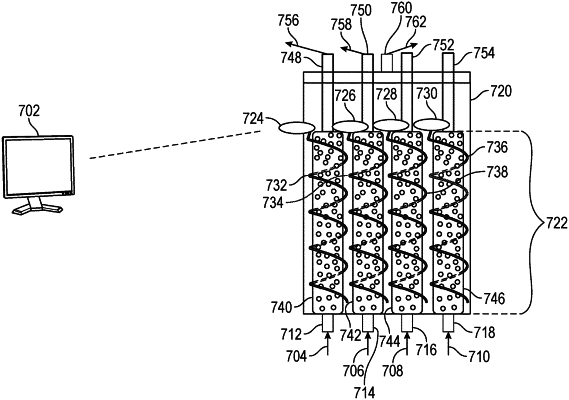| CPC B01J 6/008 (2013.01) [B01J 8/1809 (2013.01); B01J 8/1872 (2013.01); B01J 2208/00433 (2013.01); B01J 2208/00654 (2013.01)] | 5 Claims |

|
1. A system comprising:
a reaction chamber, the reaction chamber having a cylindrical shape, the reaction chamber containing a catalyst;
a fluidization plate having two sides, a first side of the fluidization plate being tangibly connected to a first end of the reaction chamber;
a gas input receiver tangibly connected to a second side of the fluidization plate;
at least one output mechanism tangibly connected to a second end of the reaction chamber;
an inductive coil encircling the reaction chamber, wherein during the operation of the system the inductive coil creates an electromagnetic field;
at least one additional reaction chamber containing additional catalyst;
at least one additional gas input; and
at least one additional output mechanism configured to output at least two additional cracked elements from the at least one additional reaction chamber,
wherein, during operation of the system:
hydrocarbon gas is received at the gas input receiver, resulting in input gas;
the input gas is forced through the fluidization plate, resulting in fluidized gas in the reaction chamber;
the fluidized gas mixes with the catalyst, resulting in at least one catalyzed molecule;
the at least one catalyzed molecule undergo pyrolysis, resulting in at least two cracked elements;
the at least two cracked elements are removed from the system via the at least one output mechanism, at least one of the two cracked elements being a bespoke form of carbon in a solid form; and
the catalyst of the reaction chamber and the additional catalyst of the at least one additional reaction chamber are distinct, such that the at least two cracked elements produced by the reaction chamber are distinct from the at least two additional cracked elements produced by the at least one additional reaction chamber.
|